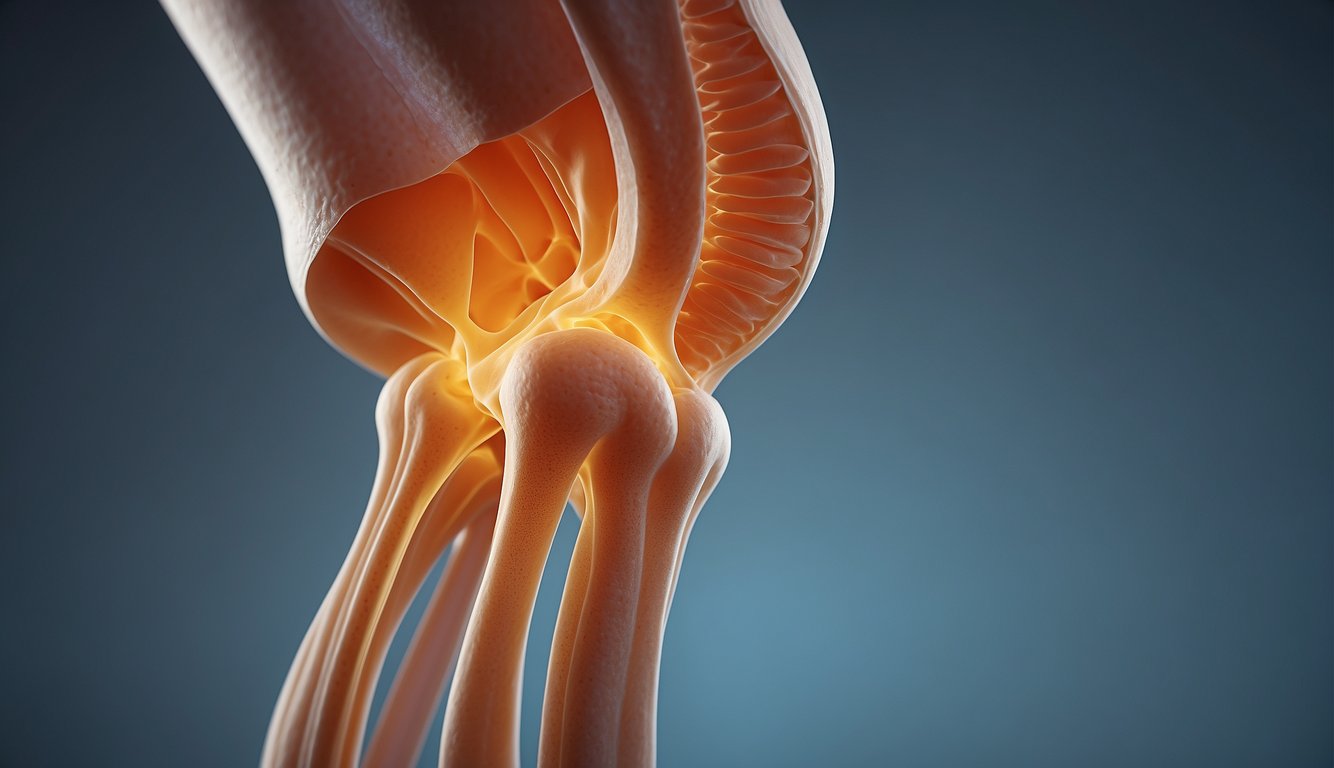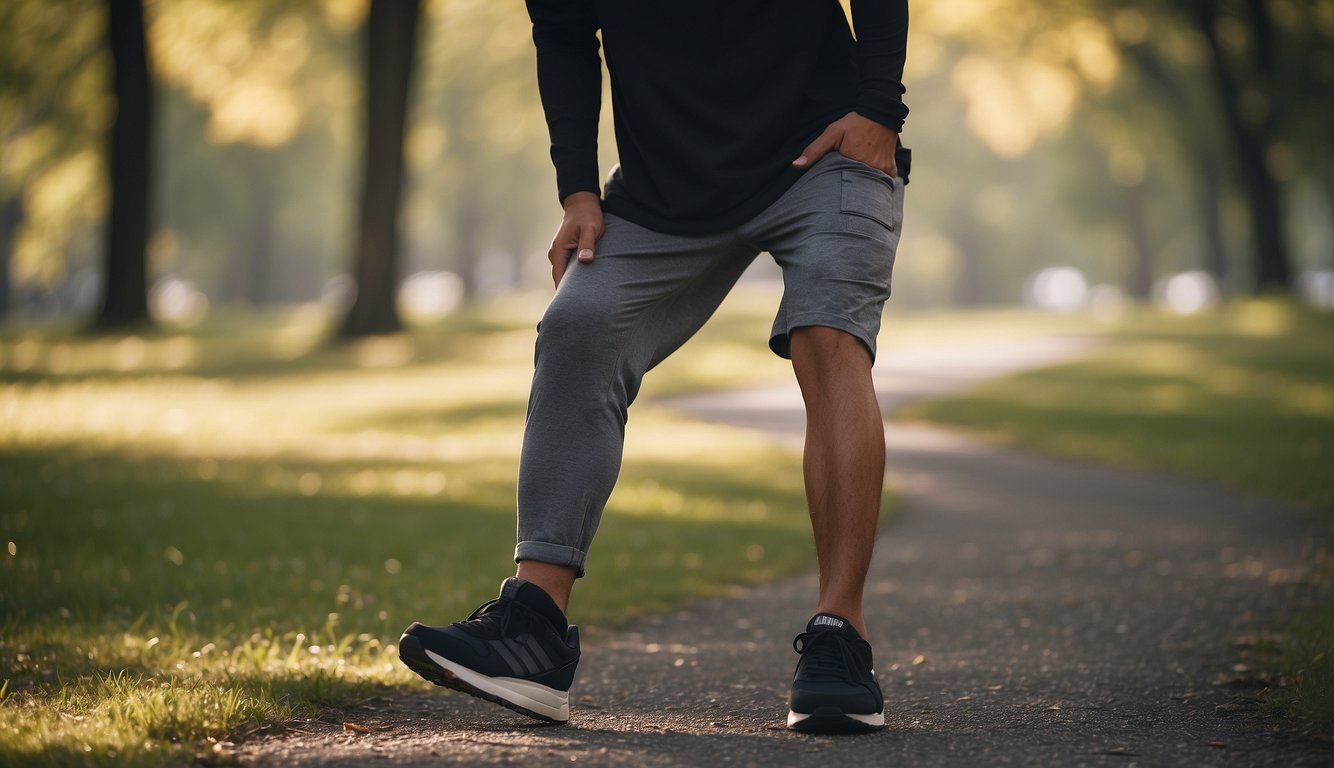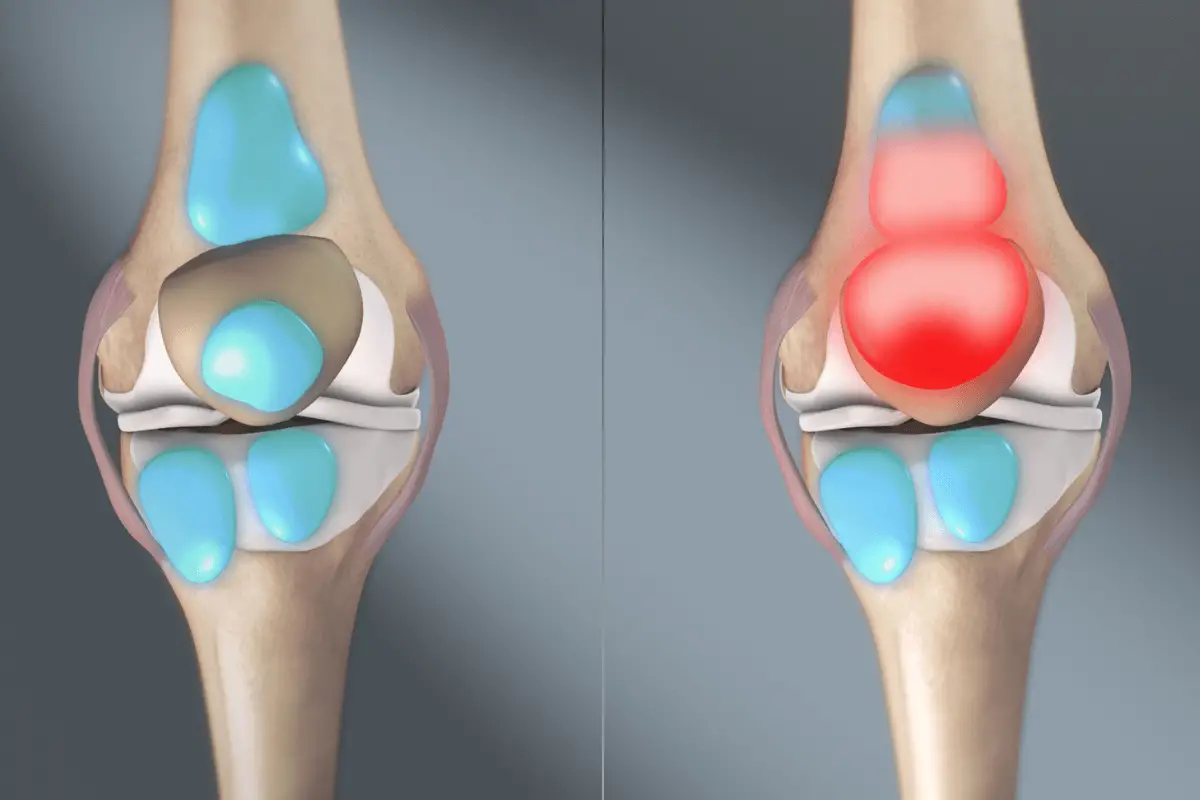Bursitis hip is a painful condition that affects the bursae, which are small, fluid-filled sacs that cushion the bones, tendons, and muscles near the hip joint. When these sacs become inflamed, it can cause pain and discomfort in the hip area, making it difficult to move and perform daily activities.
Bursitis hip is a common condition that can affect anyone, but it is more common in older adults, athletes, and people who perform repetitive motions that put strain on the hip joint. Symptoms of bursitis hip can include pain, tenderness, swelling, and stiffness in the hip area, as well as difficulty walking or standing for long periods of time.
If you are experiencing symptoms of bursitis hip, it is important to seek medical attention to determine the underlying cause of your pain and develop an appropriate treatment plan. Treatment options may include rest, physical therapy, medication, or in some cases, surgery. With the right treatment and care, many people are able to manage their symptoms and improve their quality of life.
Understanding Bursitis – Bursitis Hip
Anatomy of the Hip
Before we explore bursitis hip natural remedies, it’s essential to grasp the anatomy of the hip. The hip joint is a ball-and-socket joint where the head of the femur (thighbone) fits into the acetabulum (socket) of the pelvis. This joint is encased by various muscles, tendons, and bursae, which are crucial for understanding how bursitis affects the hip and how natural remedies can be applied.
What Is Bursitis?
Bursitis is the inflammation of a bursa, which is a small, fluid-filled sac that acts as a cushion between bones, tendons, and muscles. Bursitis can occur in any joint in the body, including the hip. When the bursa in the hip joint becomes inflamed, it causes hip pain and discomfort, especially during movement.
Types of Hip Bursitis
There are two main types of bursitis hip natural remedies can address: trochanteric bursitis and iliopsoas bursitis. Trochanteric bursitis occurs when the bursa on the outside of the hip joint, near the greater trochanter of the femur, becomes inflamed. This type of bursitis is more common among those seeking natural remedies and can cause pain on the outside of the hip, thigh, and buttocks.
Iliopsoas bursitis, on the other hand, occurs when the bursa on the inside of the hip joint, near the iliopsoas muscle, becomes inflamed. This type of bursitis is less common and can cause pain in the groin area.
It’s crucial to understand that hip pain isn’t always a result of bursitis. Conditions like tendinitis or arthritis can also lead to similar discomfort, highlighting the importance of consulting with a healthcare professional for an accurate diagnosis before considering bursitis hip natural remedies.
Bursitis is the inflammation of a bursa and can cause hip pain and discomfort. There are two main types of hip bursitis: trochanteric bursitis and iliopsoas bursitis. Understanding the anatomy of the hip and the different types of bursitis can help in the diagnosis and treatment of hip pain.
Other Bursitis Types – Bursitis Hip

Aside from hip bursitis, there are other types of bursitis that can occur in different parts of the body. Here are some of them:
Bursitis Knee
Bursitis hip natural remedies can also be considered for knee joint issues. The most common type of knee bursitis, known as prepatellar bursitis, occurs in the front of the knee. This condition is often the result of prolonged kneeling and is frequently seen in individuals with occupations such as carpet layers, gardeners, and miners who might also benefit from exploring bursitis hip natural remedies for their knee problems.
Bursitis Shoulder
Shoulder bursitis, also known as subacromial bursitis, is a condition where the bursa in the shoulder joint becomes inflamed. This can cause pain and stiffness in the shoulder, especially when lifting objects overhead. Shoulder bursitis is often caused by repetitive overhead activities, such as throwing a ball or painting a ceiling.
Olecranon Bursitis
Olecranon bursitis is a condition where the bursa at the tip of the elbow becomes inflamed. This can cause swelling and pain in the elbow, and may make it difficult to fully extend the arm. Olecranon bursitis is often caused by repetitive pressure on the elbow, such as leaning on it for long periods of time.
Bursitis Elbow
Bursitis can also occur in the elbow joint, and is often caused by repetitive activities that involve bending and straightening the elbow, such as playing tennis or golf. Symptoms of elbow bursitis include pain, swelling, and stiffness in the elbow joint.
It is important to note that while bursitis can be painful and uncomfortable, it is usually treatable with rest, ice, and anti-inflammatory medications. In some cases, physical therapy or corticosteroid injections may be necessary to reduce inflammation and relieve pain. If you suspect that you may have bursitis, it is important to see a healthcare professional for an accurate diagnosis and appropriate treatment plan.
Causes and Risk Factors – Bursitis Hip
Bursitis hip is a condition that can occur due to various factors. In this section, I will discuss the common causes of bursitis and identify the risk factors associated with it.
Common Causes of Bursitis
Bursitis hip can be caused by overuse, injury, or trauma to the affected area. Repetitive motion, such as running, stair climbing, bicycling, or standing for long periods of time, can also lead to bursitis. In addition, bone spurs or calcium deposits can irritate the bursa and cause bursitis.
Inflammatory arthritis such as rheumatoid arthritis and gout can also contribute to the development of bursitis. Infection is another possible cause of bursitis hip. However, this is a less common cause of the condition.
Identifying Risk Factors – Bursitis Hip
While anyone can develop bursitis hip, certain factors can increase the risk of developing the condition. For example, bursitis hip is more common in women than in men. Age is another risk factor, as the risk of developing bursitis increases with age.
Being overweight can also increase the risk of developing bursitis, particularly in the hip and knee areas. Diabetes is another risk factor for bursitis hip.
Bursitis hip can be caused by overuse, injury, trauma, repetitive motion, bone spurs, rheumatoid arthritis, gout, and infection. Risk factors for developing bursitis hip include age, gender, overuse, being overweight, and having diabetes.
Symptoms of Hip Bursitis

Hip bursitis is a common condition that can cause pain and discomfort in the hip area. Recognizing the symptoms of hip bursitis is important in order to seek proper treatment and alleviate the discomfort.
Recognizing Bursitis Symptoms
One of the most common symptoms of hip bursitis is pain on the outer side of the hip. This pain can be sharp or dull and can worsen with activity or pressure on the affected area. In addition to pain, bursitis can also cause tenderness, swelling, and inflammation in the hip area.
Pain and Discomfort – Bursitis Hip
The pain associated with hip bursitis can be quite severe and can make it difficult to perform everyday activities such as walking, climbing stairs, or even sitting for long periods of time. The pain may also radiate down the thigh or to the buttocks.
Associated Symptoms
In addition to pain and discomfort, hip bursitis can also cause other symptoms. Some people with hip bursitis may experience a fever, although this is less common. It is also possible for the bursa to become infected, which can cause redness, warmth, and a fever.
Overall, recognizing the symptoms of hip bursitis is important in order to seek proper treatment and alleviate the discomfort associated with the condition. If you are experiencing hip pain, tenderness, swelling, or inflammation, it is important to talk to your doctor to determine if hip bursitis may be the cause.
Reducing Inflammation – Get The Best Supplement Here
Then I went to those things that I know have a reputation of reducing inflammation and swelling and preventing infection. I went to alternating ice and heat 3 times a day to reduce the swelling and inflammation. I started taking extra doses of a food form of the mineral magnesium to help with the inflammation. A food form of vitamins and minerals are important because you body cannot absorb synthetic forms properly (see my article “The Truth About Vitamins“).
I started taking anti-inflammatory enzymes that I use to do the same thing reduce inflammation and swelling. The Yoga arm and shoulder stretches which I was doing I increased. I also went to see a massage therapist to get full body massage with extra attention to the neck, shoulder and arm areas. I started rubbing an ointment I use, which has tissue repair herbs, into my neck, shoulders and elbows. Doing all of these things together which are known to reduce inflammation and swelling.
Bursitis can cause infection so I brought my vitamin C levels up to ward off infection (see Orthomolecular Medicine, Dr. Klenner) and to keep my immune system strong. I also added a herbal formula and also olive leaf that boosts the immune system and destroys pathogens which again avoids infection reduces inflammation and of course swelling.
Diagnosis – Bursitis Hip
As a healthcare provider, when a patient presents with symptoms of hip pain, I will perform a physical exam to determine if they have bursitis hip. During the physical exam, I will palpate the hip area to check for tenderness, swelling, and warmth. I will also assess the range of motion of the hip joint and check for any clicking or popping sounds.
Physical Exam
According to the Mayo Clinic, physical examination is the first step in diagnosing hip bursitis. The healthcare provider will look for signs of inflammation, such as redness, warmth, and swelling, and will assess the range of motion of the hip joint. They may also check for any clicking or popping sounds when the hip joint is moved.
Imaging Tests
Imaging tests such as X-rays, MRI scans, and ultrasounds may be used to diagnose bursitis hip. X-rays can help rule out other conditions such as arthritis, while MRI scans and ultrasounds can help identify the inflamed bursa and any surrounding tissue damage.
Differential Diagnosis – Bursitis Hip
It is important to note that other conditions such as tendinitis, tight muscles, or other hip conditions can cause similar pain and require different treatments. According to Harvard Health, pain on the side of the hip is more likely from tendinitis, tight muscles, or another condition. Therefore, a thorough physical exam and imaging tests are necessary to differentiate between bursitis hip and other conditions.
Once a diagnosis of bursitis hip is confirmed, a physical therapist may be recommended to help with exercises that can improve hip strength and flexibility and reduce pain.
Bursitis In Hips Treatment
As someone who has dealt with bursitis in my hips, I know how frustrating and painful it can be. Fortunately, there are several treatment options available to help manage the symptoms and prevent future flare-ups.
Prevention and Management
One of the best ways to prevent bursitis in the hips is to avoid activities that put excessive stress on the hip joint. This includes activities like running, jumping, and other high-impact exercises. If you must engage in these activities, it is important to take frequent breaks and stretch regularly to help prevent muscle fatigue.
Lifestyle Adjustments
Making certain lifestyle adjustments can also help manage symptoms of bursitis in the hips. For example, losing weight can help reduce the load on the hip joint and decrease the risk of developing bursitis. Additionally, using assistive devices like a walking cane or crutches can help relieve pressure on the affected area and promote healing.
Exercise and Strengthening
Engaging in exercises that strengthen the muscles surrounding the hip joint can also help manage symptoms of bursitis. This includes exercises like hip abductions, leg raises, and clamshells. It is important to work with a physical therapist or trainer to develop a safe and effective exercise plan.
Avoiding Aggravating Activities
In addition to avoiding high-impact activities, it is important to identify and avoid any activities that aggravate your bursitis symptoms. This may include sitting for long periods of time or standing for extended periods without taking breaks. By making these adjustments, you can help manage your symptoms and prevent future flare-ups.
Overall, there are several treatment options available to help manage bursitis in the hips. By making certain lifestyle adjustments, engaging in strengthening exercises, and avoiding aggravating activities, you can help manage your symptoms and reduce the risk of future flare-ups.
Special Considerations – Bursitis Hip

Bursitis in Different Populations
As I mentioned earlier, bursitis hip is a common condition that can affect anyone. However, there are certain populations that are more susceptible to developing this condition. For example, older adults are more prone to bursitis hip due to the natural wear and tear of the joints that occurs with aging. In addition, athletes who engage in activities that require repetitive hip movements, such as running and jumping, are also at a higher risk of developing bursitis hip.
Complications and Comorbidities
While bursitis hip is typically a self-limiting condition that can be managed with conservative treatment, there are certain complications and comorbidities that can arise in some cases. For example, individuals with arthritis may be more prone to developing bursitis hip due to the inflammation and degeneration of the joints that occurs with this condition. Additionally, spine problems such as scoliosis can also lead to bursitis hip by altering the mechanics of the hips and causing abnormal stress on the bursae.
Rehabilitation is an important aspect of managing bursitis hip, especially for individuals who have comorbidities or complications that may affect their recovery. Physical therapy can help improve range of motion and strength in the affected hip, while also addressing any underlying biomechanical issues that may be contributing to the condition. In severe cases, surgery may be necessary to remove the inflamed bursa and alleviate symptoms. However, this is typically a last resort and conservative treatment options are usually effective in managing bursitis hip.
Bursitis and The Herb Prof: A Soothing Synergy
Let’s explore the world of Bursitis, a common health concern, and its unique connection with our website, theherbprof.com.
Bursitis can be a challenging part of one’s health journey. But don’t worry! Nature has provided us with herbs that can help soothe it. It’s like a comforting hug for your joints!
But how does this tie into theherbprof.com? Well, we’re all about sharing the wisdom of herbs. And Bursitis? It’s one of the health concerns we aim to address!
We’re a perfect pair, really. Theherbprof.com provides the platform, and Bursitis is one of the topics we cover. We highlight the herbs that can help manage it, and it brings a wealth of information to our readers.
So, when you’re browsing theherbprof.com, make sure to stop by our Bursitis section. It’s a dynamic duo you won’t want to miss! And remember, laughter is the best medicine, but a little herbal knowledge might just be the perfect sidekick!
References:
Little Herb Encyclopedia, by Jack Ritchason; N.D., Woodland Publishing Incorporated, 1995
The Ultimate Healing System, Course Manual, Copyright 1985, Don Lepore
Planetary Herbology, Michael Tierra, C.A., N.D., Lotus Press, 1988
Handbook of Medicinal Herbs, by James A. Duke, Pub. CRP Second Edition 2007
The Complete Medicinal Herbal, by Penelope Ody, Published by Dorling Kindersley
Before You Go – Check the Following Articles!
Autoimmune Diseases: The Role of Diet and Nutrition
Rheumatoid Arthritis: Causes & Treatment Options
Check these Categories:
Frequently Asked Questions – Bursitis Hip
What are the common symptoms of hip bursitis in women?
Hip bursitis in women can cause pain on the outside of the hip, thigh, or buttock. The pain may be sharp or dull and can worsen with prolonged standing, walking, or climbing stairs. Some women may also experience swelling, redness, or warmth in the affected area. In severe cases, the pain may radiate down the leg to the knee.
What are the most effective treatments for hip bursitis?
There is no one-size-fits-all treatment for hip bursitis. Treatment options depend on the severity of the condition and may include rest, ice, compression, and elevation (RICE), physical therapy, nonsteroidal anti-inflammatory drugs (NSAIDs), corticosteroid injections, or surgery in rare cases. It is important to consult a healthcare provider for proper diagnosis and treatment.
Which exercises are recommended for someone with hip bursitis?
Gentle exercises that do not put too much strain on the hip joint are recommended for someone with hip bursitis. These may include low-impact activities such as swimming, cycling, or using an elliptical machine. Stretching exercises that target the hip muscles can also help alleviate pain and improve flexibility.
How can one test for hip bursitis?
A healthcare provider can diagnose hip bursitis by conducting a physical exam and reviewing the patient’s medical history. Imaging tests such as X-rays, MRI, or ultrasound may be used to rule out other conditions that may cause similar symptoms.
What factors can cause a flare-up of hip bursitis?
Hip bursitis can be caused by overuse, injury, or underlying medical conditions such as rheumatoid arthritis or gout. Certain activities that put repeated stress on the hip joint such as running, jumping, or standing for long periods of time can also trigger a flare-up of hip bursitis.
Is engaging in walking advisable for those suffering from hip bursitis?
Low-impact activities such as walking may be recommended for those suffering from hip bursitis. However, it is important to start with short distances and gradually increase the intensity and duration of the activity to avoid exacerbating the condition. It is also important to wear proper footwear and take breaks as needed to prevent overuse injuries.

